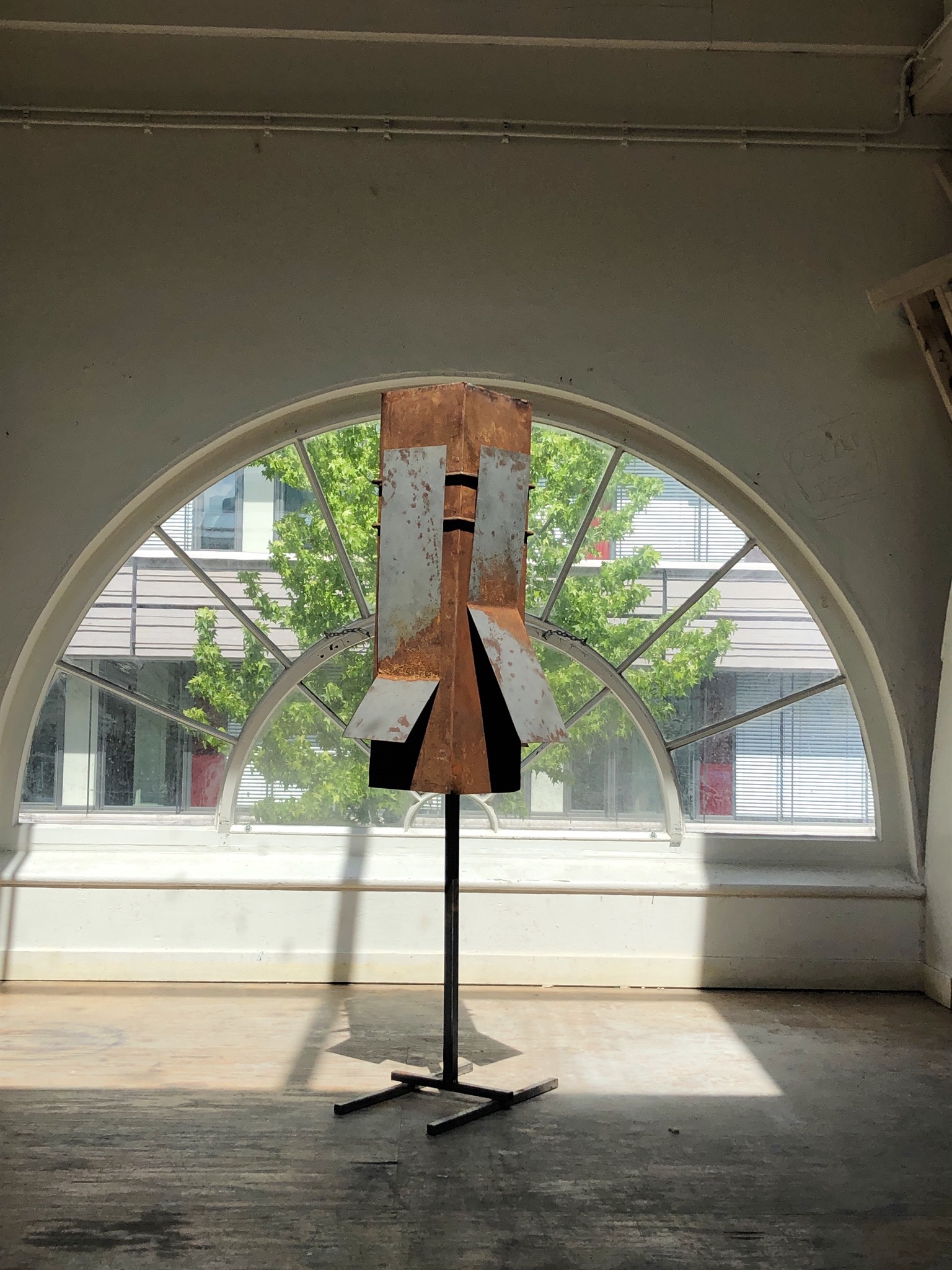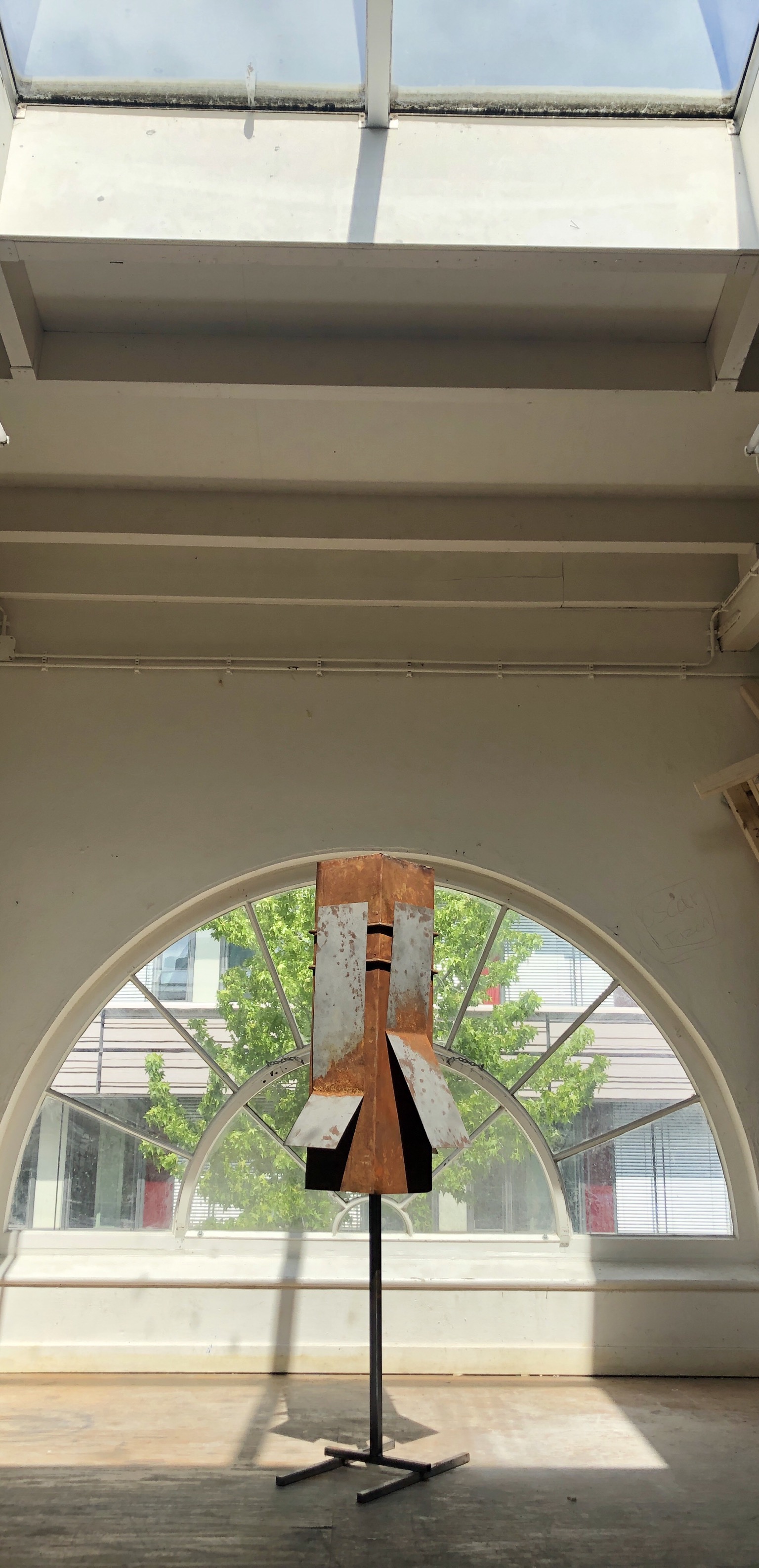K A L I M B A
Kalimba, made at the artist’s studio, Royal Academy of Arts, 2019.
About the Work
Fascinated by the potential of producing sound from harsh materials, this work brings an idea into reality—a sculptural reinterpretation of a musical instrument, the Kalimba. This three-dimensional structure, with extended metal keys, is not only a functional instrument but also an exploration of material transformation through sound and touch.
The process of making this piece is deeply attuned to listening—both to external music and to the material itself. The act of bending, striking, and assembling the metal becomes a dialogue between the artist and the medium. The resonance of each key, the resistance of the material under pressure, and the subtle shifts in tone as the structure takes form all contribute to an evolving auditory experience. The creation of sound is not just the end result but an integral part of the work’s formation.
At the core of this piece is the phenomenon of metal corrosion. With each interaction, fingerprints leave traces on the surface, triggering oxidation. As electrons transfer from the metal to the oxygen molecules, rust slowly forms, marking the passage of time through an evolving patina. This natural process becomes part of the work’s narrative—a record of touch, presence, and transformation.
Through this interplay of sound and materiality, the work invites both participation and reflection. It is an instrument not only for producing music but also for revealing the unseen interactions between the body, time, and matter.
Effort, labor and Sonic Experience
Documenting the process of creation through images is essential to capturing the physical and sensory engagement with the material. Each step—cutting, bending, and tuning the metal—reveals the labor and precision required to shape the instrument. The images showcase the transformation from raw industrial material to a resonant, interactive object, highlighting the tension between resistance and manipulation. They also capture the moments of sound emerging during the making—the ringing of metal under force, the subtle vibrations as keys are adjusted, and the shifting tones that evolve throughout the process. By presenting these stages visually, the audience gains insight into the craftsmanship, the unpredictability of material behavior, and the intimate dialogue between the artist and the work as it comes to life. These images not only document the technical aspects but also serve as a record of the artist’s engagement, reinforcing the relationship between materiality, sound, and time.







